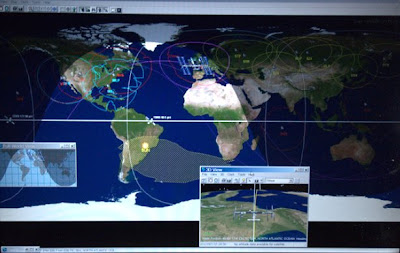China is making increasingly aggressive plans to launch 20 spacecrafts this year,2013.
This will include the country's third lunar probe Chang'e-3 and manned spacecraft Shenzhou-10, China Aerospace Science and Technology Corporation (CASC) announced.
The country is scheduled to conduct a manned space docking test between orbiting target module Tiangong-1 and Shenzhou-10, the corporation said during an internal work conference.
The Chang'e-3 moon probe is expected to land and stay there during the second stage of the country's lunar probe program, it said.
According to CASC, by 2020, China will have more than 200 spacecrafts operating in orbit, accounting for about 20 percent of the world's total.
How many of the countries who are already under threat from China's expansionist plans will suffer as a consequence of their imposed domination of the space above the Earth's atmosphere?
What safeguards can be put in place to prevent their militarisation of Space and to make the Earth's atmospheric zone a de-militarised zone (DMZ)?
This will include the country's third lunar probe Chang'e-3 and manned spacecraft Shenzhou-10, China Aerospace Science and Technology Corporation (CASC) announced.
The country is scheduled to conduct a manned space docking test between orbiting target module Tiangong-1 and Shenzhou-10, the corporation said during an internal work conference.
The Chang'e-3 moon probe is expected to land and stay there during the second stage of the country's lunar probe program, it said.
According to CASC, by 2020, China will have more than 200 spacecrafts operating in orbit, accounting for about 20 percent of the world's total.
How many of the countries who are already under threat from China's expansionist plans will suffer as a consequence of their imposed domination of the space above the Earth's atmosphere?
What safeguards can be put in place to prevent their militarisation of Space and to make the Earth's atmospheric zone a de-militarised zone (DMZ)?



























